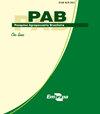Wheat grain biofortification for essential amino acids
IF 0.7
4区 农林科学
Q3 AGRICULTURE, MULTIDISCIPLINARY
引用次数: 1
Abstract
Abstract The objective of this work was to select wheat genotypes aiming to increase the essential amino acids in their grains. The study was carried out in the 2019 crop year, in a randomized complete block design, organized in a 5x5 factorial arrangement – five environments in the state of Rio Grande do Sul, Brazil (Cachoeira do Sul, Cruz Alta, Santo Augusto, São Gabriel, and Vacaria), and five wheat genotypes ('BRS Parrudo', 'Marfim', 'Quartzo', 'TBIO Mestre', and 'TBIO Sinuelo') –, with two replicates. Polar metabolites were extracted from the flour of the ground wheat grains, derivatized, and evaluated by gas chromatography-mass spectrometry. Both variance components and genetic parameters were estimated for the metabolites. To select the genotypes for the traits of interest, the multi-trait index based on factor analysis and ideotype design, the multi-trait genotype-ideotype distance index, and the multi-trait stability index were applied. The wheat genotypes express a high genetic variability and selection possibility for gentiobiose, butyric acid, galactopyranosyl, phenylalanine, tryptophan, leucine, and isoleucine. The 'Marfim' genotype remains stable for essential amino acid levels in the studied environments. The 'Quartzo' genotype stands out in the expression of leucine, isoleucine, phenylalanine, and tryptophan in its grains.小麦谷物必需氨基酸的生物强化
摘要本工作的目的是选择小麦基因型,以增加其籽粒中必需氨基酸的含量。该研究在2019年作物年度采用随机完全区组设计,按5 × 5因子安排进行,即在巴西南里约热内卢大州的5个环境(南卡乔埃拉州、克鲁兹阿尔塔州、圣奥古斯托州、奥加布里尔州和瓦卡里亚州)和5个小麦基因型(BRS Parrudo、Marfim、Quartzo、TBIO Mestre和TBIO Sinuelo)进行试验,并进行2个重复。从磨碎的小麦籽粒的面粉中提取极性代谢物,进行衍生化,并用气相色谱-质谱法进行评价。对代谢物的变异成分和遗传参数进行了估计。采用基于因子分析和理想型设计的多性状指数、多性状基因型-理想型距离指数和多性状稳定性指数筛选感兴趣性状的基因型。小麦基因型表现出高度的遗传变异性和选择可能性,包括基因糖、丁酸、半乳糖酰丙氨酸、苯丙氨酸、色氨酸、亮氨酸和异亮氨酸。在所研究的环境中,“Marfim”基因型的必需氨基酸水平保持稳定。“Quartzo”基因型在其籽粒中亮氨酸、异亮氨酸、苯丙氨酸和色氨酸的表达中表现突出。
本文章由计算机程序翻译,如有差异,请以英文原文为准。
求助全文
约1分钟内获得全文
求助全文
来源期刊

Pesquisa Agropecuaria Brasileira
农林科学-农业综合
CiteScore
1.20
自引率
0.00%
发文量
45
审稿时长
9-18 weeks
期刊介绍:
Pesquisa Agropecuária Brasileira – PAB – is issued monthly by Empresa Brasileira de Pesquisa Agropecuária – EMBRAPA, affiliated to Ministry of Agriculture, Livestock and Food Supply. PAB publishes original scientific-technological articles on Plant Physiology, Plant Pathology, Crop Science, Genetics, Soil Science, Food Technology and Animal Science.
Its abbreviated title is Pesq. agropec. bras., and it should be used in bibliographies, footnotes, references and bibliographic strips.
 求助内容:
求助内容: 应助结果提醒方式:
应助结果提醒方式:


